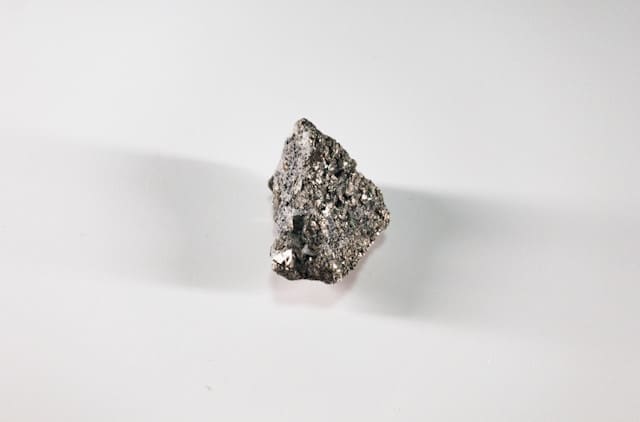
Arsenicum album
Latin name: Arsenicum album
Short name: Ars
Common name: White arsenic | Arsenious acid | Arsenic trioxide | Arsenic | Arsenous oxide
Primary miasm: Psoric Secondary miasm(s): Sycotic, Syphilitic
Kingdom: Minerals
Family: Metalloid oxides
- Symptomatology
- Remedy Information
- Differentiation & Application
Arsenicum album is a potentised preparation of arsenic trioxide (As₂O₃), a white, crystalline, odourless powder that is highly toxic. Historically known for its role as a poison, it also held medicinal status in low doses in 18th- and 19th-century allopathy, used in treatment for skin conditions, asthma, and syphilis. It has strong effects on the gastrointestinal tract, respiration, and circulatory system, and is classically associated with burning pains, anxiety, and collapse.
Used industrially in glassmaking, pesticides, and semiconductor manufacturing. Historically used as a tonic and to treat chronic skin and lung conditions, although discontinued due to toxicity. It is also associated with multiple historical poisonings and gained notoriety in both literature and real criminal cases.
Proved by Samuel Hahnemann, first published in Materia Medica Pura (~1811–1821). Proving involved administration of trituration and potentised forms of arsenic to healthy volunteers under Hahnemann’s supervision.
- Gastrointestinal tract
- Mucous membranes (especially respiratory and digestive)
- Skin
- Lungs
- Kidneys
- Circulatory system
- Right side
- Mind (fear, anxiety, restlessness)
Warmth; warm drinks; lying with head high; company; motion (gentle); frequent small sips of water; rest after exertion.
Cold air; cold drinks; midnight to 2 a.m.; alone; after eating ice cream or cold food; sea air; wet weather; exertion (mental and physical); emotional shock.
- Phosphorus: Burning pains, thirst, and gastrointestinal issues, but more open and emotionally expressive.
- Veratrum album: Diarrhoea and collapse with cold sweat, but more violent and cold.
- Carbo vegetabilis: Collapse state, but desires fanning and open air.
- China: Debility from fluid loss without the same level of anxiety or burning.
- Nux vomica: Also irritable and fastidious, but more aggressive and focused on control.
- Complementary: Carbo veg., Phosphorus, Secale cor.
- Antidotes: Nux vomica, Camphor
- Inimical: Lycopodium
- Follows well: Aconite, Veratrum alb.
- Precedes well: Bryonia, Nux vomica
Arsenicum album captures the human terror of disorder, decay, and death. Its essence is survival through control. The patient seeks to organise life against the fear of loss, chaos, or annihilation. They are restless, both in body and in mind, pacing away their fears and clinging to routines, warmth, and reassurance. Arsenicum transforms the poisoned state into one of refined vitality through structure and order.
Use for food poisoning, gastroenteritis, anxiety with restlessness, eczema, burns, and asthma, especially when symptoms are burning, acrid, and better for warmth. A top remedy for collapse states, including after haemorrhage or emotional trauma. Dose: 30C or 200C in acute cases; 6C or LM for sensitive patients; 1M+ for constitutional prescribing with strong mental-emotional profile.
Mind
- MIND – Fear of death, predicting the time
- MIND – Anxiety, driving from place to place
- MIND – Fastidious
- MIND – Restlessness, with despair
Stomach
- STOMACH – Thirst for cold water, small quantities
- STOMACH – Vomiting after cold drinks
Skin
- SKIN – Burning, relieved by heat
- SKIN – Ulcers, gangrenous
Generalities
- GENERAL – Collapse, after diarrhoea
- GENERAL – Burning, internal
- GENERAL – Weakness, after exertion
Samuel Hahnemann, Materia Medica Pura
James Tyler Kent, Lectures on Homoeopathic Materia Medica
John Henry Clarke, A Dictionary of Practical Materia Medica
William Boericke, Pocket Manual of Materia Medica
Constantine Hering, Guiding Symptoms of Our Materia Medica
Henry C. Allen, Keynotes and Characteristics
